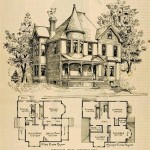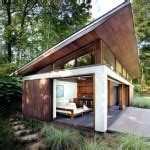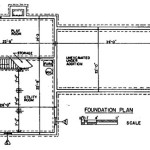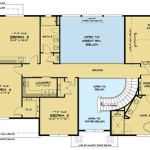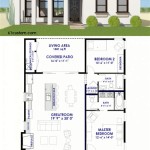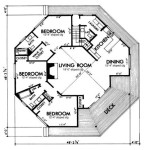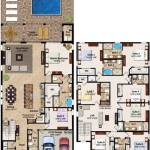Designing house floor plans is the process of creating a layout for a house, which includes the arrangement of rooms, hallways, windows, and doors. Floor plans are used by architects, builders, and homeowners to plan the construction of a house and to visualize its interior space.
Floor plans can be simple or complex, depending on the size and complexity of the house. Simple floor plans may only show the layout of the rooms, while more complex floor plans may also include details such as the placement of furniture, appliances, and fixtures.
Floor plans are an essential part of the house-building process, and they can help to ensure that a house is designed to meet the needs of its occupants. By following a few simple principles, homeowners can design floor plans that are both functional and aesthetically pleasing.
When designing house floor plans, there are several important points to consider:
- Functionality
- Flow
- Aesthetics
- Privacy
- Storage
- Energy efficiency
- Budget
- Zoning
By keeping these points in mind, you can create a floor plan that meets your needs and creates a home that you love.
Functionality
Functionality is one of the most important considerations when designing a house floor plan. A functional floor plan will allow you to move around your home easily and efficiently, and it will make it easy to use all of the spaces in your home.
- Traffic flow:
The traffic flow in your home should be smooth and efficient. You should be able to move from one room to another without having to backtrack or go through unnecessary spaces. Consider the flow of traffic when placing rooms and doorways, and make sure that there are no bottlenecks or awkward transitions.
- Room size and shape:
The size and shape of each room should be appropriate for its intended use. For example, a living room should be large enough to accommodate your furniture and guests, while a bedroom should be large enough to fit a bed, dresser, and nightstand. The shape of a room can also affect its functionality. For example, a square room is more versatile than a long, narrow room.
- Room relationships:
The relationships between rooms are also important to consider. For example, the kitchen should be located near the dining room and living room, and the bedrooms should be located near the bathrooms. This will help to minimize the amount of traffic in your home and make it easier to get around.
- Storage:
Storage is an important consideration for any home. Make sure that you have enough storage space for all of your belongings. This includes closets, cabinets, drawers, and shelves. Consider your storage needs when designing your floor plan, and make sure that you have enough space for everything you need.
By following these tips, you can create a functional floor plan that will make your home more enjoyable and efficient.
Flow
Flow refers to the way that people move through a space. When designing a house floor plan, it is important to consider how people will move from one room to another and how they will use the space. A good floor plan will allow people to move around easily and efficiently, without feeling cramped or crowded.
- Clear pathways:
There should be clear pathways between all of the rooms in your home. This means that there should be no obstacles blocking the way, and that the pathways should be wide enough for people to walk comfortably. Avoid creating narrow hallways or doorways that could make it difficult to get around.
- Natural flow:
The flow of traffic in your home should be natural and intuitive. People should be able to move from one room to another without having to backtrack or go through unnecessary spaces. Consider the flow of traffic when placing rooms and doorways, and make sure that there are no bottlenecks or awkward transitions.
- Separate public and private spaces:
Public spaces, such as the living room and dining room, should be located near the entrance of the home. Private spaces, such as the bedrooms and bathrooms, should be located in a more secluded area. This will help to create a sense of privacy and separation between different areas of the home.
- Minimize wasted space:
Wasted space is space that is not used for any specific purpose. When designing your floor plan, try to minimize the amount of wasted space. This can be done by using efficient room layouts and by avoiding unnecessary hallways or corridors.
By following these tips, you can create a floor plan that flows well and makes it easy to move around your home.
Aesthetics
Aesthetics is an important consideration when designing a house floor plan. The way that your home looks and feels can have a big impact on your quality of life. A well-designed floor plan will create a home that is both beautiful and functional.
There are many different elements that contribute to the aesthetics of a house floor plan. These include things like the overall layout of the home, the size and shape of the rooms, the placement of windows and doors, and the use of materials and finishes. All of these elements work together to create a home that is both visually appealing and comfortable to live in.
When considering the aesthetics of your floor plan, it is important to think about how you want to use the space. For example, if you entertain often, you may want to create a floor plan that has a large living room and dining room. If you have a large family, you may want to create a floor plan that has multiple bedrooms and bathrooms.
It is also important to consider your personal style when designing your floor plan. If you prefer a traditional style, you may want to create a floor plan that has a symmetrical layout and uses classic materials like wood and stone. If you prefer a more modern style, you may want to create a floor plan that has an open layout and uses contemporary materials like glass and metal.
No matter what your personal style is, there are many different ways to create a beautiful and functional floor plan. By following the tips in this article, you can create a home that you love.
Privacy
Privacy is an important consideration when designing a house floor plan. A well-designed floor plan will create a home that provides privacy for all of its occupants. There are many different ways to design for privacy, and the best approach will vary depending on the specific needs of the homeowners.
One important aspect of privacy is the separation of public and private spaces. Public spaces, such as the living room and dining room, are typically located near the entrance of the home and are used for entertaining guests and other activities that involve interaction with others. Private spaces, such as the bedrooms and bathrooms, are typically located in a more secluded area of the home and are used for activities that require privacy.
Another important aspect of privacy is the placement of windows and doors. Windows and doors can provide natural light and ventilation, but they can also compromise privacy if they are not placed carefully. When placing windows and doors, it is important to consider the views from both inside and outside the home. Windows should be placed to provide views of the outdoors without compromising privacy. Doors should be placed to allow for easy access to different areas of the home without creating a sense of vulnerability.
Finally, the use of walls, partitions, and other barriers can also help to create privacy. Walls and partitions can be used to divide a space into different areas, and they can also be used to block views from one area to another. Other barriers, such as curtains, blinds, and screens, can also be used to create privacy when needed.
By following these tips, you can create a house floor plan that provides privacy for all of its occupants. A well-designed floor plan will create a home that is both comfortable and secure.
Storage
Storage is an important consideration when designing a house floor plan. A well-designed floor plan will include adequate storage space for all of the belongings of the home’s occupants. There are many different types of storage spaces that can be incorporated into a floor plan, including closets, cabinets, drawers, and shelves. The type and amount of storage space that is needed will vary depending on the specific needs of the homeowners.
One important aspect of storage is the location of storage spaces. Storage spaces should be located in convenient locations that are easily accessible to the people who need them. For example, a coat closet should be located near the entrance of the home, and a linen closet should be located near the bedrooms. Storage spaces should also be designed to accommodate the specific items that will be stored in them. For example, a closet for storing winter coats should be large enough to accommodate bulky items, and a cabinet for storing dishes should have adjustable shelves to accommodate different sizes and shapes of dishes.
Another important aspect of storage is the type of storage space that is used. There are many different types of storage spaces available, including open shelves, closed cabinets, and drawers. The type of storage space that is used will depend on the specific needs of the homeowners and the items that will be stored in the space. For example, open shelves can be used to store items that are frequently used, while closed cabinets can be used to store items that are less frequently used or that need to be protected from dust and dirt. Drawers can be used to store small items that need to be kept organized.
Finally, it is important to consider the overall amount of storage space that is needed. The amount of storage space that is needed will vary depending on the size of the home and the number of people who live in it. A small home with only one or two occupants may not need as much storage space as a large home with a family of five. When determining the amount of storage space that is needed, it is important to consider both the current needs of the homeowners and their future needs.
By following these tips, you can create a house floor plan that includes adequate storage space for all of the belongings of the home’s occupants. A well-designed floor plan will create a home that is both organized and comfortable.
Energy efficiency
Energy efficiency is an important consideration when designing a house floor plan. A well-designed floor plan can help to reduce energy consumption and lower utility bills. There are many different ways to design for energy efficiency, and the best approach will vary depending on the specific needs of the homeowners and the climate in which they live.
- Orientation:
The orientation of a home can have a significant impact on its energy efficiency. A home that is oriented to take advantage of natural sunlight can reduce the need for artificial lighting and heating. In the Northern Hemisphere, homes that are oriented to the south will receive the most sunlight, while homes that are oriented to the north will receive the least sunlight. In the Southern Hemisphere, homes that are oriented to the north will receive the most sunlight, while homes that are oriented to the south will receive the least sunlight.
- Windows and doors:
Windows and doors are another important factor to consider when designing for energy efficiency. Windows and doors that are properly sealed and insulated can help to reduce heat loss and gain. In addition, windows and doors that are placed strategically can help to take advantage of natural sunlight and ventilation. For example, placing windows on the south side of a home can help to heat the home in the winter, while placing windows on the north side of a home can help to cool the home in the summer.
- Insulation:
Insulation is an important factor to consider when designing for energy efficiency. Insulation helps to reduce heat loss and gain by trapping air between the interior and exterior of the home. Insulation can be installed in walls, ceilings, and floors. The type and amount of insulation that is needed will vary depending on the climate in which the home is located.
- Air sealing:
Air sealing is another important factor to consider when designing for energy efficiency. Air sealing helps to reduce heat loss and gain by preventing air from leaking through cracks and gaps in the home’s envelope. Air sealing can be accomplished by using caulk, weatherstripping, and gaskets.
By following these tips, you can create a house floor plan that is energy efficient and helps to reduce utility bills.
Budget
Budget is an important consideration when designing a house floor plan. The cost of building a home can vary significantly depending on the size, complexity, and materials used. It is important to establish a budget before beginning the design process to ensure that the final cost of the home is within your means.
There are many different ways to save money on the cost of building a home. One way is to choose a simple floor plan. Complex floor plans with multiple rooms, hallways, and staircases will cost more to build than simple floor plans with fewer rooms and a more straightforward layout. Another way to save money is to use less expensive materials. For example, vinyl flooring is less expensive than hardwood flooring, and laminate countertops are less expensive than granite countertops.
It is also important to consider the cost of ongoing maintenance when budgeting for a new home. Homes with large yards and complex landscaping will require more maintenance than homes with smaller yards and simpler landscaping. Homes with swimming pools or other water features will also require more maintenance than homes without these features.
By carefully considering your budget and making smart choices about the size, complexity, and materials used in your home, you can create a beautiful and functional home that fits within your financial means.
Here are some additional tips for saving money on the cost of building a home:
- Get multiple bids from different contractors before hiring one.
- Shop around for the best prices on materials.
- Consider using recycled or reclaimed materials.
- Do some of the work yourself, such as painting or landscaping.
- Take advantage of tax breaks and other financial incentives for energy-efficient homes.
Zoning
Zoning is a system of land use regulation that divides a city or town into different districts, each with its own set of permitted uses. Zoning laws are enacted by local governments to promote public health, safety, and welfare. Zoning laws can also be used to protect the character of a neighborhood and to ensure that new development is compatible with existing development.
When designing a house floor plan, it is important to be aware of the zoning laws that apply to your property. Zoning laws can restrict the size, height, and location of new buildings. Zoning laws can also restrict the use of land for different purposes. For example, a property that is zoned for residential use cannot be used for commercial purposes.
It is important to check with your local zoning board before beginning the design process to ensure that your plans comply with the zoning laws. If your plans do not comply with the zoning laws, you may need to revise your plans or apply for a variance.
Zoning laws can be complex, and it is important to seek professional advice if you are unsure about how they apply to your property. An experienced architect or land use planner can help you to design a house floor plan that complies with the zoning laws and that meets your needs.
Here are some additional things to keep in mind when considering zoning laws:
- Zoning laws can vary from one municipality to another. It is important to check with your local zoning board to determine the specific zoning laws that apply to your property.
- Zoning laws can change over time. It is important to stay up-to-date on the zoning laws that apply to your property.
- Zoning laws can be enforced through fines and other penalties. It is important to comply with the zoning laws to avoid potential legal problems.









Related Posts

